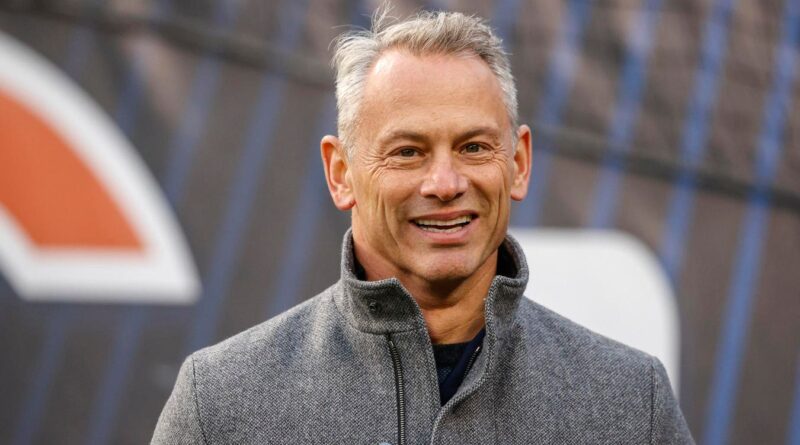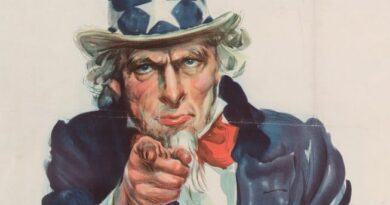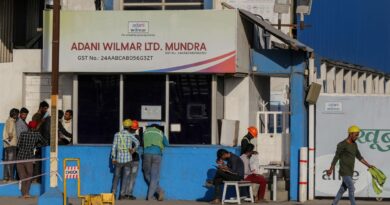Did The Cubs Do Enough At The Trade Deadline?
FILE – Chicago Cubs President of Baseball Operations Jed Hoyer attends an NFL football game between the Chicago Bears and Washington Commanders, Thursday, Oct. 13, 2022, in Chicago. (AP Photo/Kamil Krzaczynski, File)
Copyright 2022 The Associated Press. All rights reserved.
Going into the last two months of the season, the Cubs have one of the best records in baseball. They have a 97 percent chance of reaching the playoffs and a just over 7 percent shot at winning the World Series, according to Fangraphs. They are tied Dodgers for the second highest win total in the league. If not for the red-hot Brewers, the Cubs would have a seven game lead in the their division.
But headed into Thursday’s trade deadline, it was clear that they had a few roster needs to address in order to make those playoff odds a reality. The Cubs lacked reliable bench depth on offense and needed to bolster the bullpen and add a high-level arm to the starting rotation.
It could be argued that they were at least mostly successful on the first two fronts. They got 28-year-old utilityman Willi Castro from the Twins, who will not only strengthen the Cubs bench, but he could be a real value add. Castro has an above average wRC+ and hits left-handed pitching really well, which has been a challenge for the Cubs offense. And they acquired Michael Soroka, Andrew Kittredge, and Taylor Rogers in trades with the Nationals, Orioles, and Reds. All three should help the bullpen, and there’s a chance Soroka is used out of the rotation as well. He has not been good as a starter for the past two seasons, but until the Cubs get Jameson Taillon and Javier Assad back from injury, Soroka might have to be a stopgap in early August.
But the Cubs’ greatest area of need was rotation help. They lost Justin Steele to Tommy John surgery in April, and Shota Imanaga was out of the rotation with a hamstring injury for roughly two months. Imanaga has since returned and pitched well, but as the Cubs’ rotation currently stands, Imanaga and All-Star Matthew Boyd are the top two starters in Chicago. Both have been good this season – Boyd has a real case for comeback player of the year – but it’s fair to question whether that duo is good enough to go up against the best rotations in the National League, especially in a playoff series.
With that in mind, it’s probably safe to say this trade deadline was not a full success for team president Jed Hoyer. One of the things Hoyer did well was balancing his prospect depth with the team’s short-term needs. It became evident very early that getting top-tier starting pitching was going to cost a lot in this year’s trade market, and Hoyer opted to hold on to his best prospects rather than ship a bunch of them off for the sake of going all in on this season.
That might pay off in the long term for the Cubs, as it is still unclear whether they have a real shot at extending Kyle Tucker or signing him to a long term contract this offseason. Tucker already cost the Cubs some real prospect capital, so they might need to hold on to guys like Owen Caissie to be prepared to fill the gap Tucker will leave in the outfield when he hits free agency in the winter. They have over $94 million in luxury tax space in 2026, according to Spotracbut the kind of contract Tucker will likely command would stretch the Cubs’ budget for eight to ten years, which is a commitment Hoyer might not want to make.
Still, it is hard to make sense of his very aggressive 2024/2025 offseason with the rather conservative approach he took at this trade deadline. It might have made sense to keep adding to the team at the margins like he has at the last two trade deadlines, but after going all out to get a guy like Tucker – one who, again, is almost certainly only with the team for this season – it would have made more sense for Hoyer to be aggressive again before Thursday afternoon’s deadline passed.
To be fair, some starting pitchers who seemed to be Cubs targets, like Mackenzie Gore and Sandy Alcantara, did not get traded at all, so it’s unclear how available they actually were. Hoyer – and any other front office executive – can’t convince a rival general manager to part with a player he is bent on keeping, sometimes no matter the offer.
The next two months of baseball will show whether or not the Cubs roster Hoyer has built is enough to stand up to a dogfight with the Brewers for the National League Central title. And beyond that, the Cubs will show whether they have the weapons to compete with the other best teams in the National League in the postseason. Given the tepid trade deadline the Cubs just had, fans will have to hope that it is.




